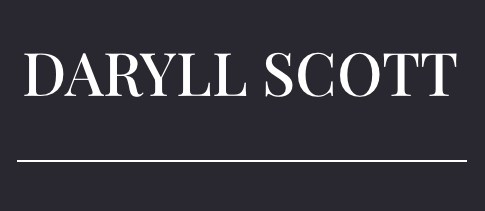Confessions of a Hypnotist
Hypnosis debunked and influence decoded.

I get mixed reactions when I tell people that I’m an NLP expert and that one of the techniques in my personal change toolkit is hypnosis.
Some people are wary, some are fascinated, some are dismissive, and if I had a penny for every time someone said,“Don’t look into his eyes.”…
In all cases, there are huge misconceptions about what hypnotic trance is and how it happens.
I think it’s important to debunk those misunderstandings and make it as transparent as possible because when you understand how hypnosis works, you understand how influence works, and it doesn’t work the way you think…
This understanding is essential if you are a leader, coach, change agent, behavioural scientist, healthcare professional, friend, parent, or anyone who needs to positively nurture behaviour change. It will challenge your thinking about control, ethics and non-violent communication.
In his article, I will answer the questions:
- Does hypnosis work?
- What are the different types of hypnosis?
- What conditions are required for someone to be receptive?
- What makes suggestions acceptable?
- How does a hypnotist maintain influence?
- What’s the difference between influence and control?
I will provide practical takeaways for leaders, behavioural scientists and coaches.
Does hypnosis work?
There are a variety of hypnotic states, and most feature a combination of focused attention and deep relaxation.
There is nothing mystical or unnatural about hypnotic states. We slip into them every day: You may be transfixed by a gripping movie, mesmerised by a brilliant storyteller or find yourself awakening from a 12-yard stare in the 10-yard room. These states are not only natural; they are healthy. Without these slack-jawed moments of relaxed attention, we become a twitchy bag of nerves.
Mindfulness practices and flow states have the same qualities as a hypnotic trance.
Of course, hypnosis works; it’s a naturally occurring state. When we ask the question, ‘Does hypnosis work?’ We are really asking whether interpersonal communication can evoke these states deliberately. The answer is a big YES.
I have never met a person I cannot help get into a hypnotic state, but sometimes, I need to employ different approaches to help get them there. Not everyone is equally suggestible, but with enough skill and flexibility on the part of the hypnotist, it works for everyone.
What are the different types of hypnosis?
There are quite a few different applications of hypnosis, ranging from psycho-analytical enquiry to past-life regression, and all have slightly different delivery styles. The three applications I have experience with are Traditional Hypnosis, Rapid Induction / Stage Hypnosis, and Ericksonian Hypnosis.
Traditional Hypnosis: This clumsy and direct style of hypnosis is what most people imagine hypnosis to be. The hypnotist makes direct suggestions, and the subject obligingly does what they are told and enters a trance-like state. For this to work, there needs to be a power dynamic at play, the hypnotist is interpersonally dominant. It’s unsophisticated, only works sometimes, and you can learn little about the true nature of influence from it.
Rapid Induction / Stage Hypnosis: This is a lot of fun as a short-term parlour trick. It works by evoking a deeply unconscious pattern of behaviour and then interrupting the behaviour in a shocking or surprising way. When our experience does not play out as per our deep unconscious expectations, our brain farts, and we are unable to make sense of our experience. In that window, the hypnotist can issue a command, and, in most cases, the subject will go with it. I used to do this on stage at corporate events to show what’s possible, usually helping an audience member overcome stage fright instantly. I stopped doing this because, although the audience was entertained, they wouldn't talk to me afterwards. The helpful learning from this hypnotic technique is that when we are shocked, discombobulated or experience enormous cognitive strain, we become incapable of thinking for ourselves and look outside of ourselves for any helpful input. Beware of making important decisions when you are profoundly confused.
Ericksonian Hypnosis: This is the style of hypnosis I teach and that the rest of this article focuses on. It’s the style of hypnosis you learn on an NLP Programme, as Milton H. Erickson was one of the extraordinary people ‘modelled’ by NLP co-founders Bandler and Grinder in the early 1970s. Instead of direct commands, the hypnotist uses more permissive, creative and indirect suggestions, guiding the subject into a trance. There is no power dynamic required, and as you will discover, it is a most ethical and ecological style of communication.
What conditions are required for someone to be receptive?
Sigmund Freud dabbled with hypnosis but abandoned it because the style of communication was too intimate, preferring the very detached, analytical sofa, chair and clipboard style that you would associate with psychotherapy. I wonder how profoundly different the last hundred years would have been had Freud opted for a more connected approach.
Hypnosis is a deeply connected style of communication. The interpersonal conditions required are authentic connection and undivided attention.
As such, you don’t do hypnosis to someone; you do it with someone; it is a state that you enter into together. You cannot guide someone into relaxed and open-minded thinking if your state is tense and close-minded. You cannot create influential dynamics when you think of communication as a one-way street. It’s a vibe, a dance, an interpersonal dynamic. Real communication happens with people, not at them.
If you want the subject or your audience to connect with you, then connect with them. Read the room and match their energy. Get in sync. Get on the same page.
If you want the subject or your audience to give you their undivided attention, pay undivided attention to them. Get out of your head and into the room. Observe the live dynamic and the real-time feedback.
What makes suggestions acceptable?
Confirmation bias is the tendency to pay attention to whatever fits with our existing beliefs and to completely ignore anything that conflicts with our current thinking. We are all deeply afflicted with this pre-logical closed-mindedness. It’s an absolute stinker of a cognitive bias.
This bias is really obstructive in interpersonal communication: When we sense that we are entering a disagreement, we become completely un-influenceable. We stop listening entirely and go into our private world to think about what we will say when the other person finishes talking.
The currency of influence is agreement.
So much so that research has shown that our opinions change entirely whether we nod or shake our heads. That’s bonkers! We are not influenced by facts or cold logic; we are influenced because when the information lands, we agree; we think ‘yes’.
To communicate with influence, we must first find agreement; to do that, we must find common ground.
The skilful hypnotist usually establishes a feeling of agreement by casually throwing in statements that are so obviously true that they are impossible to disagree with.
For example, “You are reading this blog post. It has provoked some thoughts.”
This may seem a little machiavellian, saying things just for the sake of gaining agreement, but it’s not. To find agreement, we must see things from the other person’s perspective, respect their opinion, and empathise with their position.
Acknowledging the other person’s view of the world improves our understanding of our audience and adds nuance to our communication. It also means that when we communicate, they will listen.
How does a hypnotist maintain influence?
Any hypnotist will tell you their suggestions can be a bit hit or miss.
Sometimes, the subject finds the hypnotist’s suggestions agreeable, but sometimes, they fail to respond or dismiss the suggestion with a tiny shake of their head. To maintain the condition of agreement and, therefore, the connection and influence, the hypnotist must quickly endorse the subject’s resistance and make it part of the experience.
In other words, the hypnotist makes a suggestion - if the subject responds to the suggestion, great; if the subject does not respond to the suggestion, also great.
For example:
The Hypnotist says,“You are reading this blog post, and it has provoked some thoughts.”
If the subject responds with a tiny nod, the hypnotist will say,“And that’s good.”Then, the hypnotist will continue with the following suggestion.
If the subject responds with a frown or shake, the hypnotist will say,“Or maybe not, and either way, that’s a good thing.”Then, the hypnotist will continue with the following suggestion.
It’s a catch-all way of communicating that respects people will do what they want when they want, and the hypnotist’s job is to join up with that and go with whatever the subject wants.
This is the illusion that a skilful hypnotist creates:
It looks like the person being hypnotised is doing whatever the hypnotist suggests. What’s really happening is that the person being hypnotised is responding, or not, to vague suggestions, and the hypnotist is watching for the response and going with it.
That’s what creates and deepens the spell…
It seems like the hypnotist is leading, and the subject is following. In reality, the subject leading, and the hypnotist is following.
The hypnotist maintains influence by making everything that happens an intentional part of the communication, respecting the subject, and going with whatever they get. One of my hypnosis teachers told me, “Your job is to help the other person find their ideal trance experience.”
It’s far more of an investigation than an imposition.
What’s the difference between influence and control?
I hope what has begun to become apparent in reading this is that true influence is a deep human connection with bucketloads of respect and flexibility.
When we think of hypnosis, we think of ‘Mind Control’, but when it comes to the most skilful and precise form of hypnosis, there is no control at all. The spell is created with non-directive flexibility; the less controlling you are, the more influential you will be.
The highly skilled hypnotist will:
- Connect genuinely with undivided attention
- Get on the same page by seeing things from the subject’s perspective
- Make vague and permissive positive suggestions in the hope that the subject will find the suggestion agreeable
- Positively acknowledge when they do, adapt with more flexibility when they don’t
- Navigate this feedback loop throughout the communication until you reach an agreeable place
Imagine if we all communicated that way.
When people attend my training courses, I tell them that to be an amazingly influential communicator, they must let go of any desire to control.
This is sometimes counter-intuitive wisdom as, in our everyday lives, we see people being influential and getting their way because of status or power dynamics. That’s not influential communication; it’s who they are in relation to the context.
Real influential abilities do not require a job title or any other indication of status or power. They require the ability to connect human-to-human, respect differences, find common ground, make suggestions, and respond to feedback.
That’s what helps you find the win-win. The genuine partnership. The happy client/employee. The lasting agreement. The developing relationship, the ecological change.
Genuine, powerful human communication can never be one-way traffic - it’s always a loop.
- If you want to capture people’s attention - pay attention to them
- If you want people to feel connected to you - open yourself up to connect to them
- If you want to master influence - be prepared to be influenced in the process
“You are at the end of this blog post, and there are things you are thinking, so that means it would be good to share it with your network to get them thinking, too. Thank you for reading.”










